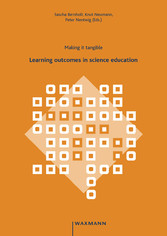Suchen und Finden
Service
Making it tangible. Learning outcomes in science education
One of the central features in current educational reforms is a focus on learning outcomes. Many countries have established or revised standards to describe what teachers are supposed to teach and students are expected to learn. More recently, the emphasis has shifted to considerations of how standards can be operationalized in order to make the outcomes of educational efforts more tangible. This book is the result of a symposium held in Kiel, that was arranged by two science education groups, one at the IPN (Leibniz-Institute for Science and Mathematics Education at the University of Kiel) in Germany and the other at the University of York, UK. The seminar brought together renowned experts from 12 countries with different notions of the nature and quality of learning outcomes. The aim was to clarify central conceptions and approaches for a better understanding among the international science education community. The book is divided into five parts. In Part A, the organizers set the scene, describing the rationale for arranging the symposium. Part B provides a broad overview about different approaches, challenges, and pitfalls on the road to the clarification of meaningful and fruitful learning outcomes. The set of papers in Part C provides deep insights into different, although comparable approaches which aim to frame, to assess, and to promote learning and learning outcomes in science education. Smaller projects are presented as well as broad, coordinated national programs. The papers in Part D outline the individual historical development from different national perspectives, reflecting the deficits and problems that led to current reforms. Finally, a summary of the organizers analyses the conclusions from different vantage points.
Alle Preise verstehen sich inklusive der gesetzlichen MwSt.










